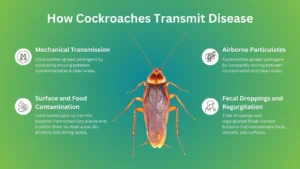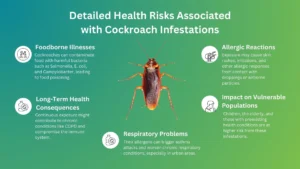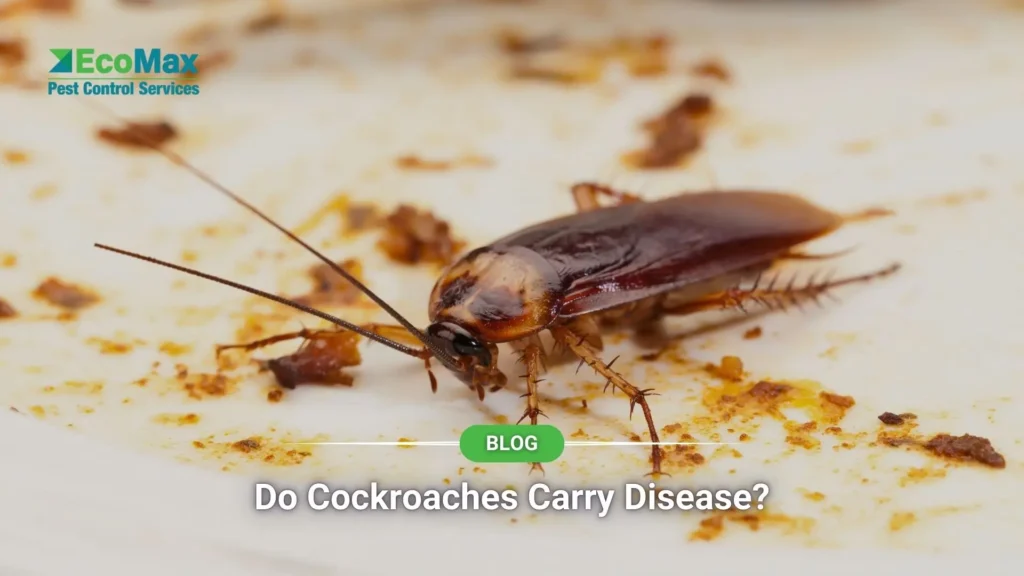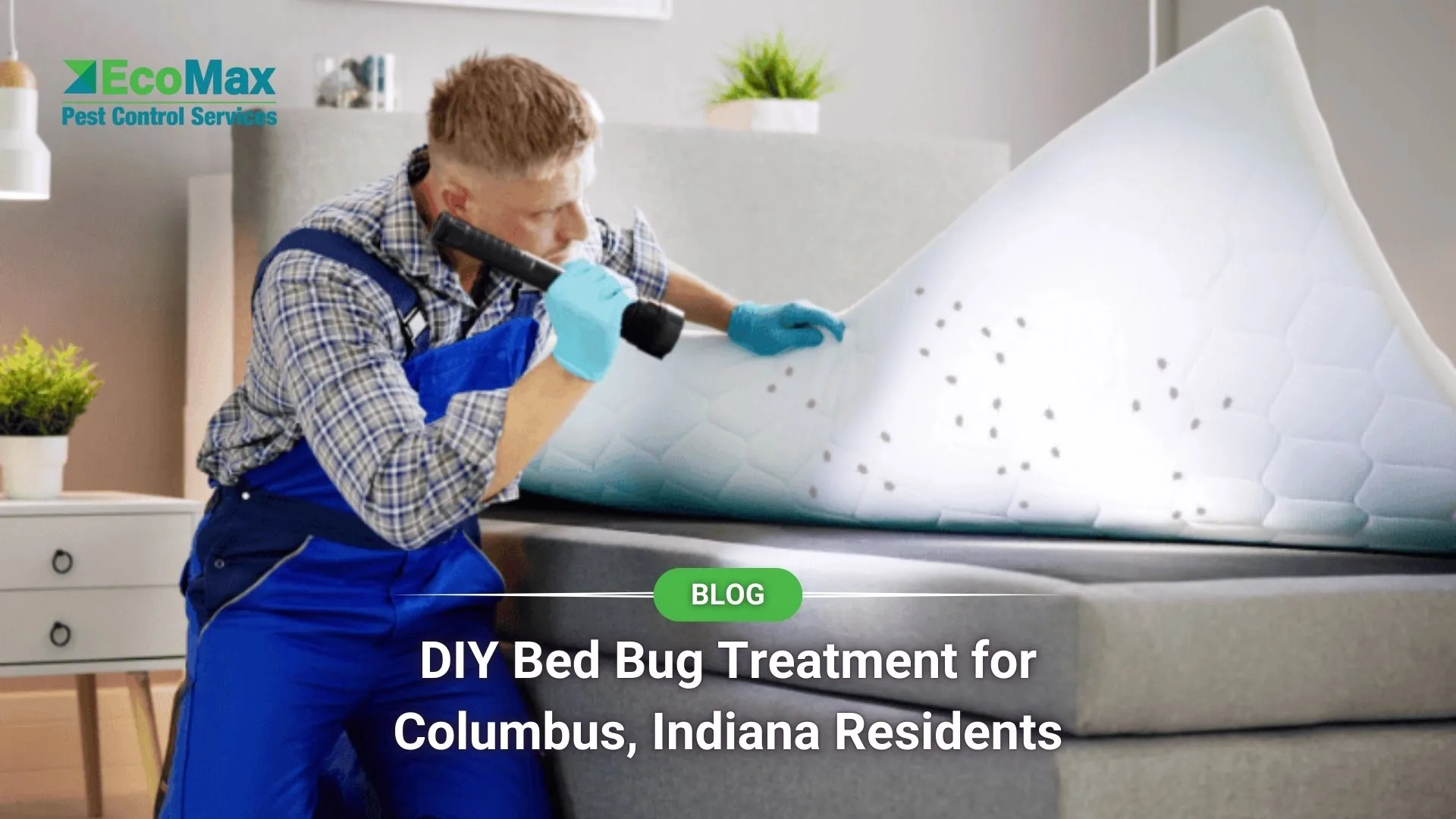Do Cockroaches Carry Disease? This is a question that many homeowners and business operators have asked, especially when they start noticing these unwelcome invaders scuttling around. In today’s post, we’ll dive deep into the science and facts behind cockroach-borne diseases, explore the health risks associated with infestations, and outline the most effective prevention and control strategies. Our goal is to provide you with a comprehensive guide that feels natural, human-written, and packed with useful insights to help you maintain a safe and hygienic environment.
Introduction
When you ask, Do Cockroaches Carry Disease? you’re not just questioning their unsightly presence—you’re also tapping into a deeper public health concern. Cockroaches have evolved to thrive in human habitats, exploiting every nook and cranny, and their ability to survive under the toughest conditions is well documented. But beyond their hardy nature lies a darker reality: these pests are notorious for picking up and transmitting a variety of pathogens that can lead to serious health issues.
In this extensive guide, we will provide a human-centered look at the dangers posed by cockroaches, supported by up-to-date statistics and expert recommendations. Whether you’re a homeowner, a restaurant owner, or someone responsible for a commercial property, understanding these risks is crucial for ensuring a safe living or working space.
Cockroach Biology and Behavior
Cockroaches are one of nature’s most resilient survivors. Here are some key points about their biology and behavior that contribute to the spread of disease:
- Adaptability: Cockroaches are highly adaptable and can thrive in a variety of environments from sewers to kitchens, and from damp basements to even dry, cluttered attics.
- Rapid Reproduction: A single female cockroach can produce hundreds of offspring in her lifetime. This rapid reproduction rate means that even a small infestation can quickly escalate into a significant problem.
- Omnivorous Diet: Cockroaches feed on almost anything. They are attracted to food residues, decaying matter, and even grease, which increases the likelihood of them picking up bacteria and other pathogens.
- Nocturnal Habits: These pests are predominantly nocturnal, meaning they are most active at night. This behavior not only makes them hard to spot but also allows them to contaminate surfaces when you’re asleep.
Their innate survival skills are both fascinating and alarming because these same traits make them efficient at spreading harmful microbes. Understanding these behaviors is critical when considering the overall impact they have on human health.
Do Cockroaches Carry Disease? – The Hard Facts
The simple answer is yes. However, the issue is more complex than a straightforward yes or no. While cockroaches do not directly bite or inject pathogens into humans, they act as mechanical carriers. They pick up various bacteria, viruses, and parasites from unsanitary environments and then transfer these pathogens to surfaces, food, and even water sources.
Common Diseases Linked to Cockroaches
Below is an in-depth look at some of the major diseases and health issues associated with cockroach infestations:
| Disease/Infection | Causative Agent | Health Impact |
| Salmonellosis | Salmonella spp. | Causes food poisoning, gastrointestinal distress, fever |
| Campylobacteriosis | Campylobacter jejuni | Leads to severe diarrhea, abdominal cramps, and dehydration |
| Cholera | Vibrio cholerae | Can cause acute diarrhea and life-threatening dehydration |
| Dysentery | Various bacteria and parasites | Results in bloody diarrhea, severe abdominal pain |
| Listeriosis | Listeria monocytogenes | Particularly dangerous for pregnant women and immunocompromised |
| Typhoid Fever | Salmonella typhi | Characterized by high fever, weakness, and systemic complications |
| E. coli Infections | Pathogenic strains of Escherichia coli | Causes food poisoning, severe abdominal pain, and cramps |
| Staphylococcus Infections | Staphylococcus aureus | Leads to skin infections, food poisoning, and toxic shock syndrome |
| Respiratory Allergies and Asthma | Cockroach allergens from droppings, shed skins, and saliva | Trigger asthma attacks and allergic reactions, especially in children and sensitive individuals |
- 63% of U.S. homes contain cockroach allergens, with urban dwellings reporting rates as high as 78% to 98%
- The World Health Organization (WHO) estimates that foodborne diseases are responsible for approximately 600 million illnesses and 420,000 deaths annually.
These statistics reinforce the notion that when you ask, Do Cockroaches Carry Disease? the answer is not just a matter of potential exposure it is a significant public health concern.
How Cockroaches Transmit Disease

Understanding the mechanisms by which cockroaches spread disease is critical for developing effective control strategies. Here’s how they do it:
- Surface and Food Contamination
Cockroaches forage in unsanitary environments like garbage bins, sewers, and decaying organic matter. During this process, they pick up harmful bacteria on their legs and bodies. When they then move to cleaner areas such as kitchens or dining tables, they transfer these pathogens, contaminating food and surfaces.
- Fecal Droppings and Regurgitation
The droppings of cockroaches are laden with bacteria and other pathogens. Additionally, cockroaches sometimes regurgitate digestive fluids that further contribute to contamination. These substances can easily settle on countertops, utensils, and food items, leading to potential outbreaks of foodborne illnesses.
- Airborne Particulates
In environments with poor ventilation, dried droppings, shed exoskeletons, and other debris can become airborne. When inhaled, these particles can trigger severe respiratory issues and allergic reactions. This airborne transmission is particularly dangerous for individuals with asthma or other respiratory conditions.
- Mechanical Transmission
Simply by moving from one location to another, cockroaches can mechanically transfer pathogens. Their constant movement between contaminated and clean areas makes them efficient at spreading disease-causing organisms.
Detailed Health Risks Associated with Cockroach Infestations

The health implications of a cockroach infestation extend far beyond mere discomfort. Here are some of the major risks associated with these pests:
- Foodborne Illnesses
Cockroaches are known to contribute to foodborne illnesses. When they contaminate food with bacteria such as Salmonella, E. coli, and Campylobacter, the risk of food poisoning increases significantly. Symptoms can range from mild gastrointestinal discomfort to severe dehydration and even hospitalization in extreme cases.
- Respiratory Problems
Exposure to cockroach allergens is a well-documented trigger for asthma attacks. These allergens can exacerbate chronic respiratory conditions, leading to increased hospital visits and a lower quality of life for affected individuals. This is especially concerning in urban areas where exposure rates are exceptionally high.
- Allergic Reactions
In addition to asthma, cockroach allergens can cause a range of allergic reactions, including skin rashes and irritations. These reactions are often triggered by direct contact with cockroach droppings or by inhaling airborne particles.
- Long-Term Health Consequences
Chronic exposure to cockroach allergens and the pathogens they carry can lead to long-term health issues. This includes the development of chronic obstructive pulmonary disease (COPD) in vulnerable populations, as well as a higher susceptibility to other infectious diseases due to a weakened immune system.
- Impact on Vulnerable Populations
Children, the elderly, and individuals with preexisting health conditions are particularly at risk. Their bodies are less capable of fighting off infections, making the presence of cockroaches in environments such as homes, schools, and hospitals a serious health hazard.
Environmental and Economic Impacts
Beyond the direct health implications, cockroach infestations have broader environmental and economic impacts:
1. Economic Burden on Businesses
For restaurants, hotels, and other food-related businesses, an infestation can lead to severe economic consequences. Not only do cockroaches tarnish the reputation of a business, but they can also result in costly health code violations and potential shutdowns. In the competitive hospitality industry, even a minor pest problem can lead to a significant loss in customer trust and revenue.
2. Environmental Contamination
Cockroaches contribute to environmental contamination by spreading bacteria and other pathogens across different surfaces. This contamination can affect not only indoor spaces but also outdoor environments, particularly in densely populated urban areas where the pests thrive.
3. Public Health Costs
The widespread presence of cockroaches in urban areas increases public health costs. Treating foodborne illnesses, respiratory conditions, and other related health issues places a financial burden on healthcare systems, making proactive pest control measures not just a personal responsibility but a societal necessity.
Prevention and Control Strategies
Preventing and controlling cockroach infestations require a comprehensive approach:
- Maintain a Clean Environment: Regular cleaning of kitchen surfaces, proper storage of food in airtight containers, and immediate cleanup of spills are essential first steps.
- Seal Entry Points: Inspect your home or business for cracks, gaps, and crevices that could serve as entry points. Sealing these can dramatically reduce the likelihood of an infestation.
- Control Moisture: Cockroaches are attracted to damp areas. Repair leaking pipes and improve ventilation in humid spaces such as bathrooms and basements.
- Professional Pest Control: For effective and lasting results, consider engaging professional pest control services. If you’re located in Columbus & Franklin, IN and surrounding areas, EcoMax offers specialized Cockroach Control Services that are designed to eliminate infestations quickly and safely. EcoMax’s expertise in eco-friendly and efficient pest management makes it the best option for protecting your property from these harmful pests.
Myths vs. Facts about Cockroaches
There are many myths surrounding cockroaches that can lead to misunderstanding the true risks they pose. Here are some common myths and the facts that debunk them:
Myth 1: Cockroaches Only Live in Dirty Environments
Fact: While cockroaches are attracted to food residues and moisture, they can thrive in even the cleanest homes if there are entry points and sufficient food sources available.
Myth 2: A Few Cockroaches Are Harmless
Fact: Even a small number of cockroaches can quickly multiply into an infestation. Moreover, the presence of any cockroaches means there is a risk of disease transmission and allergen buildup.
Myth 3: Cockroach Allergens Only Affect People with Asthma
Fact: Although individuals with asthma are particularly vulnerable, cockroach allergens can trigger allergic reactions in anyone, leading to symptoms such as skin irritation and respiratory issues.
Myth 4: DIY Solutions Are Always Effective
Fact: While DIY methods can offer temporary relief, they often do not address the root of the infestation. Professional pest control services are usually necessary for long-term solutions.
Frequently Asked Questions (FAQs)
Q: Do cockroaches bite humans?
A: Cockroaches do not bite to feed on humans, but their presence can lead to skin irritation and allergic reactions, especially when their droppings come into contact with open wounds.
Q: How quickly can cockroaches multiply?
A: Cockroaches reproduce at an astonishing rate. Under optimal conditions, a single infestation can quickly escalate into a major problem if not addressed immediately.
Q: What are the most effective ways to prevent cockroach infestations?
A: Maintaining high levels of cleanliness, sealing entry points, controlling moisture, and seeking professional pest control services are among the most effective prevention strategies.
Q: Are cockroach allergens a serious health risk?
A: Yes, exposure to cockroach allergens can trigger severe allergic reactions and asthma attacks, particularly in sensitive individuals such as children and the elderly.
Q: What should I do if I find cockroaches in my home?
A: It is crucial to act immediately. Begin by cleaning the affected areas thoroughly, sealing any potential entry points, and consulting with a professional pest control service to address the infestation comprehensively.
Conclusion
Cockroaches are more than a nuisance they are carriers of harmful pathogens that pose significant health risks. Their ability to spread bacteria, viruses, and allergens through indirect contact makes them a serious public health concern. Addressing a cockroach infestation is essential for protecting your home and well-being from foodborne illnesses and respiratory issues


